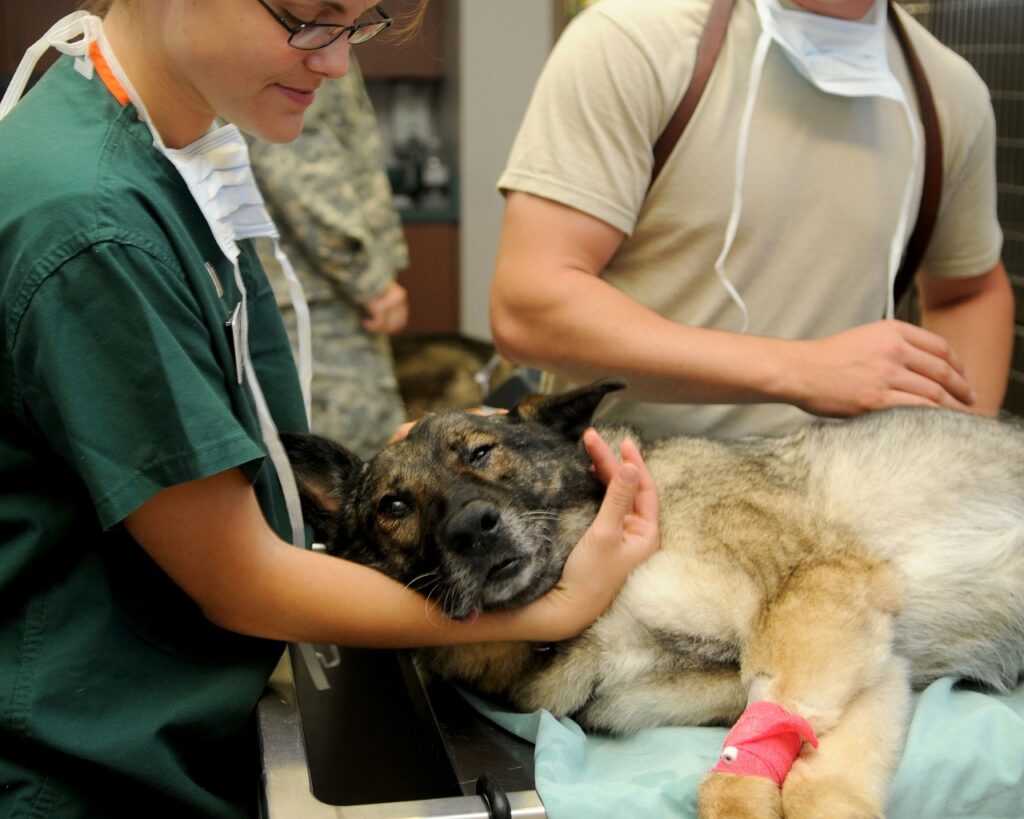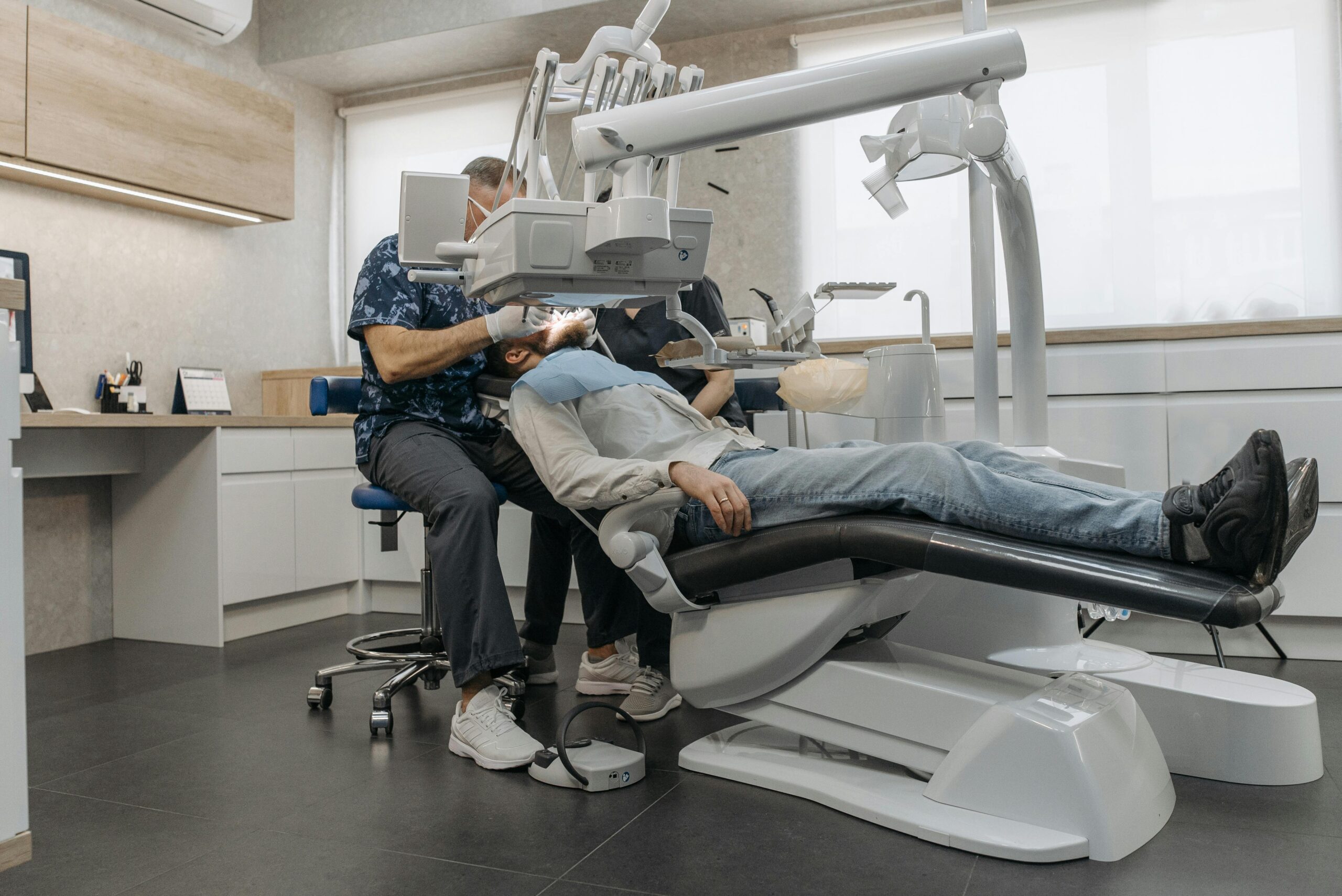How to become an Associate Veterinarian: Complete Guide

Introduction
Becoming an Associate Veterinarian can be a rewarding career path for those passionate about animal health and welfare. This guide provides a comprehensive overview of the steps required to pursue this profession. From education to licensing, we’ll cover everything you need to know to embark on this fulfilling journey.
Who is Associate Veterinarian and what do Associate Veterinarian do?
An Associate Veterinarian is a qualified professional responsible for providing medical care to animals under the supervision of a senior veterinarian. They play a crucial role in diagnosing, treating, and preventing illnesses and injuries in a variety of animals, including pets, livestock, and wildlife.
The key responsibilities of Associate Veterinarians include, but are not limited to:
- Conducting physical examinations of animals to diagnose health conditions.
- Administering vaccinations and medications.
- Performing surgical procedures, such as spaying and neutering.
- Providing emergency care to injured or sick animals.
- Advising animal owners on nutrition, behavior, and general care.
- Maintaining accurate medical records of patients.
- Collaborating with other veterinary professionals to ensure comprehensive care.
Overall, Associate Veterinarians play a vital role in promoting and maintaining the health and welfare of animals.
What are the educational qualifications required to become Associate Veterinarian?
Educational Qualifications
To become an Associate Veterinarian, you typically need to complete the following educational requirements:
- Bachelor’s Degree: Obtain a bachelor’s degree in a related field, such as biology, animal science, or pre-veterinary studies. This provides the foundational knowledge needed for veterinary school.
- Doctor of Veterinary Medicine (DVM) Degree: Complete a Doctor of Veterinary Medicine (DVM) degree from an accredited veterinary school. This program usually takes four years to complete and includes coursework in animal anatomy, physiology, pharmacology, and pathology.
- Licensure: After completing your DVM degree, you must obtain a license to practice veterinary medicine in your state or country. Licensure requirements vary but typically include passing the North American Veterinary Licensing Examination (NAVLE).
- Optional Internship or Residency: Some veterinarians choose to complete an internship or residency program after graduating from veterinary school. These programs provide additional training in a specialized area of veterinary medicine, such as surgery or internal medicine.
Where do Associate Veterinarian work?
Associate Veterinarians work in a variety of settings, including:
- Veterinary Clinics and Hospitals: Many Associate Veterinarians work in private veterinary practices, where they provide medical care to a variety of animals, including pets, livestock, and exotic animals.
- Animal Shelters and Rescue Organizations: Some Associate Veterinarians work in animal shelters and rescue organizations, where they provide medical care to animals in need and help find them permanent homes.
- Research Facilities: Some Associate Veterinarians work in research facilities, where they conduct studies to improve animal health and welfare.
- Government Agencies: Some Associate Veterinarians work for government agencies, such as the Department of Agriculture or the Food and Drug Administration, where they help ensure the health and safety of animals and the public.
- Academic Institutions: Some Associate Veterinarians work in academic institutions, where they teach veterinary students and conduct research.
Overall, Associate Veterinarians have the opportunity to work in a variety of settings, depending on their interests and career goals.
How long does it take to become a Associate Veterinarian?
Becoming an Associate Veterinarian typically takes around 8 years of education and training after high school. This includes completing a bachelor’s degree in a related field, such as biology or animal science, which usually takes 4 years. After obtaining a bachelor’s degree, aspiring veterinarians must complete a 4-year Doctor of Veterinary Medicine (DVM) degree from an accredited veterinary school. Following graduation, they must obtain a license to practice veterinary medicine in their state or country, which often involves passing the North American Veterinary Licensing Examination (NAVLE). Some veterinarians may choose to pursue an internship or residency program, which can take an additional 1-3 years. Overall, the path to becoming an Associate Veterinarian requires dedication and a significant time commitment, but can be incredibly rewarding for those passionate about animal health and welfare.
How much does a Associate Veterinarian make in a year?
The salary of an Associate Veterinarian in the United States can vary based on factors such as location, experience, and type of practice. However, according to the Bureau of Labor Statistics, the median annual wage for veterinarians was $99,250 in May 2020. The lowest 10 percent earned less than $63,900, and the highest 10 percent earned more than $164,490. Overall, becoming an Associate Veterinarian can be financially rewarding, especially for those with experience and in high-demand areas.
What hours do Associate Veterinarian work?/ What are the work hours of Associate Veterinarian?
Associate Veterinarians typically work full-time hours, which can include evenings, weekends, and holidays. The exact work hours can vary depending on the type of practice and the needs of the veterinary clinic or hospital. In some cases, Associate Veterinarians may be required to be on call or work extended hours to accommodate emergencies. Overall, the work hours of an Associate Veterinarian can be demanding but are often flexible and rewarding for those passionate about animal health and welfare.
What qualities must a Associate Veterinarian have?
To be successful as an Associate Veterinarian, several qualities are essential:
- Passion for Animals: A deep love and compassion for animals are fundamental in this role, as you’ll be working closely with them to provide care and treatment.
- Attention to Detail: Veterinary medicine requires careful observation and attention to detail to diagnose and treat animals accurately.
- Communication Skills: The ability to effectively communicate with pet owners and colleagues is crucial in explaining diagnoses, treatment options, and preventive care measures.
- Problem-Solving Skills: Veterinary medicine often presents complex cases that require analytical thinking and innovative solutions.
- Physical Stamina: The job can be physically demanding, requiring veterinarians to lift and restrain animals of varying sizes.
- Empathy and Patience: Dealing with sick or injured animals, as well as their owners, requires empathy and patience.
- Professionalism: Maintaining a high level of professionalism and ethical standards is essential in the veterinary field.
- Continuous Learning: Keeping up with advancements in veterinary medicine requires a commitment to lifelong learning and professional development.
Overall, a successful Associate Veterinarian combines these qualities with a strong work ethic and a genuine desire to improve the health and well-being of animals.
What are some related jobs Associate Veterinarian can have?
Associate Veterinarians can pursue several related careers within the field of veterinary medicine, including:
- Veterinary Specialist: After gaining experience, Associate Veterinarians can specialize in areas such as surgery, internal medicine, dermatology, or oncology.
- Veterinary Practice Owner: Some Associate Veterinarians choose to open their own veterinary practice and become business owners.
- Zoologist or Wildlife Biologist: These professionals study animals and their behavior, often working in research or conservation efforts.
- Veterinary Technician or Technologist: Assist veterinarians in providing medical care to animals, performing tests, and administering treatments.
- Animal Scientist: Conduct research to improve the production and quality of farm animals or study the behavior and welfare of animals.
- Animal Control Officer: Responsible for enforcing animal-related laws and regulations, investigating animal cruelty cases, and ensuring the welfare of animals in their jurisdiction.
These are just a few examples of related careers that Associate Veterinarians can pursue based on their interests and career goals.
Associate Veterinarian Job Industry Challenges
Working as an Associate Veterinarian can be incredibly rewarding, but it also comes with its share of challenges. From emotional stress to physical demands and ethical dilemmas, veterinarians face a unique set of obstacles in their day-to-day work. Understanding these challenges is crucial for aspiring veterinarians to prepare themselves for the realities of the profession and develop strategies to overcome them.
- Emotional Stress: Dealing with sick or injured animals, as well as difficult decisions regarding euthanasia, can be emotionally challenging.
- Physical Demands: The job often requires long hours on your feet and the physical strength to handle animals of varying sizes.
- Client Communication: Communicating effectively with pet owners, especially in challenging situations, requires empathy and tact.
- Continuing Education: Keeping up with advancements in veterinary medicine requires ongoing learning and professional development.
- Work-Life Balance: The demanding nature of the job can make it challenging to maintain a healthy work-life balance.
- Financial Constraints: Veterinary care can be expensive, and some pet owners may struggle to afford necessary treatments, leading to difficult decisions for veterinarians.
- Industry Competition: The field of veterinary medicine can be competitive, especially in areas with a high concentration of veterinarians.
- Ethical Dilemmas: Veterinarians may face ethical dilemmas, such as balancing the needs of their patients with the financial constraints of their owners.
- Burnout: The combination of emotional, physical, and mental demands can lead to burnout, affecting job satisfaction and overall well-being.
Despite these challenges, many Associate Veterinarians find the work incredibly rewarding and fulfilling, driven by their passion for animal health and welfare.
How to build a professional network in the Associate Veterinarian industry?
Building a strong professional network is crucial for success in the Associate Veterinarian industry. Here are some tips to help you build and maintain a professional network:
- Attend Veterinary Conferences and Events: Conferences and events provide excellent opportunities to meet and connect with other professionals in the field. Take advantage of these events to network and learn from others.
- Join Professional Organizations: Joining organizations such as the American Veterinary Medical Association (AVMA) or the American Animal Hospital Association (AAHA) can help you connect with other veterinarians and access valuable resources and educational opportunities.
- Utilize Social Media: Social media platforms like LinkedIn can be valuable tools for networking. Join veterinary groups, participate in discussions, and share your knowledge and expertise to establish yourself as a professional in the field.
- Attend Continuing Education Events: Continuing education events not only help you stay updated on the latest advancements in veterinary medicine but also provide opportunities to network with other professionals in the industry.
- Volunteer or Intern: Volunteering or interning at veterinary clinics, animal shelters, or wildlife rehabilitation centers can help you meet other professionals in the field and build valuable connections.
- Stay in Touch: After meeting someone in the industry, be sure to follow up and stay in touch. Send a thank-you email or connect on LinkedIn to maintain the relationship.
- Be Genuine and Helpful: When networking, be genuine and approachable. Offer to help others when you can, and they will be more likely to reciprocate.
- Attend Local Veterinary Meetings: Join local veterinary associations and attend their meetings to network with other professionals in your area.
By following these tips, you can build a strong professional network in the Associate Veterinarian industry, which can lead to new opportunities, collaborations, and friendships.
Get a high paying Associate Veterinarian job.
If you’re looking for a high-paying Associate Veterinarian job in the veterinary industry, look no further than Pulivarthi Group. As a premier global provider of staffing solutions, Pulivarthi Group connects talented professionals with top-tier opportunities that align with their skills and career goals. By signing up with Pulivarthi Group, you’ll gain access to a wide range of high-paying Associate Veterinarian positions in diverse settings, from veterinary clinics to research facilities. Take the next step in your veterinary career and join Pulivarthi Group today to unlock exciting opportunities and advance your career in the field of veterinary medicine.
Related articles

Maximizing Productivity with Efficient Dental Office Management
Discover strategies to boost productivity in your dental office through effective management.

The Role of Temporary Staffing in Managing Dental Practice Workflows
Learn how temporary staffing can help streamline workflows and improve efficiency in dental practices.

Overcoming the Challenges of Veterinary Recruitment: Strategies for Success
Discover effective strategies to overcome the challenges of veterinary recruitment and attract top veterinary talent with our guide.

How to Ensure Compliance with Dental Industry Regulations
Find out essential steps to ensure your dental practice complies with industry regulations.
Apply for Jobs
-
26 Jul 2024

Netskope Database Engineer
Job Title: Netskope Database Engineer Location: Remote Duration: 6 months Company Overview: Pulivarthi Group is a premier global provider of staffing and IT technology solutions, renown
Remote : YesTax Terms: C2C, W-2, 1099 -
26 Jul 2024

Chatbot Developer
Job Title: Chatbot Developer Location: Remote Duration: Long Term Company Overview: Pulivarthi Group is a premier global provider of staffing and IT technology solutions, renowned for d
Remote : YesTax Terms: C2C, W-2, 1099 -
26 Jul 2024

WebSphere Administrator
Job Title: WebSphere Administrator Duration: Long-term Location: 100% Remote Company Overview: Pulivarthi Group is a premier global provider of staffing and IT technology solutions, ren
Remote : YesTax Terms: C2C, W-2, 1099 -
25 Jul 2024

Reltio MDM Developer
Job Title: Reltio MDM Developer Location: Remote Company Overview: Pulivarthi Group is a premier global provider of staffing and IT technology solutions, renowned for delivering exceptio
Remote : YesTax Terms: C2C, W-2, 1099 -
25 Jul 2024

Einstein AI Consultant
Job Title: Einstein AI Consultant Location: Remote Company Overview: Pulivarthi Group is a premier global provider of staffing and IT technology solutions, renowned for delivering except
Remote : YesTax Terms: C2C, W-2, 1099 -
25 Jul 2024

BICC Admin
Job Title: BICC Admin Location: Remote Company Overview: Pulivarthi Group is a premier global provider of staffing and IT technology solutions, renowned for delivering exceptional servic
Remote : YesTax Terms: C2C, W-2, 1099
For Employers
For Talent
Quick Links
-
1188 Stonecrest Blvd, Ste 103,
Tega Cay, South
Carolina, 29708
Socials
©Copyright 2024 Pulivarthi Group

